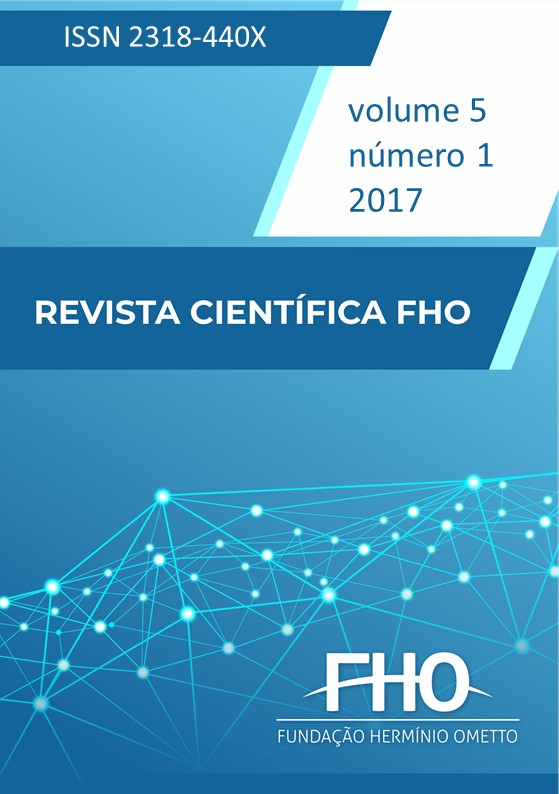Abstract
Irresponsible use of antimicrobials is stimulating antimicrobial resistance and, simultaneously, researches are being developed for the purpose of investigating plants that might show activity on pathogenic microorganisms. Rosmarinus officinalis L., known as rosemary, is traditionally used to treat intestinal disorders, such as indigestion and flatulence, along with its antiseptic, antifungal, antioxidant and antimicrobial properties. The presence of cineol (1,8-cineol or eucalyptol) in the volatile oil was shown to be the main active with antiseptic and bactericidal activities. This study aimed to evaluate the antimicrobial activity of the hydroalcoholic extract and volatile oil of rosemary (Rosmarinus officinalis L.), besides the development of an antiseptic formulation of liquid soap for hands sanitization. The antimicrobial activity was tested in opposition to Staphylococcus aureus, Escherichia coli and Candida albicans microorganisms, through the agar diffusion method, using stainless steel cylinder, in comparison to commercially utilized antimicrobial agents. The rosemary extract presented antimicrobial activity in relation to S. aureus and C. albicans strains, whereas the volatile oil inhibited the three tested microorganisms’ growth. Regarding the formulations, the soap with rosemary extract presented some activity towards S. aureus and C. albicans, and the soap with rosemary volatile oil showed activity when related to E. coli and C. albicans. It was possible to obtain rosemary extract and rosemary volatile oil and then incorporate them into liquid soap formulations for evaluation of the antimicrobial activity. The rosemary volatile oil and the extract presented antimicrobial activity towards some of the tested microorganisms, as well as when incorporated into the soaps and when analyzed by the agar diffusion technique.
References
ANDRADE, E. D. Terapêutica medicamentosa em odontologia. 3. ed. São Paulo: Artes Médicas, 2014.
BRASIL. Agência Nacional de Vigilância Sanitária. Farmacopeia Brasileira. 5. ed. Brasília: Anvisa, 2010.
BURTON, G. R. W.; ENGELKIRK, P. G. Microbiologia para as ciências da saúde. 7. ed. Rio de Janeiro: Guanabara Koogan, 2005.
COSTA, G. M. et al. Effect of plant extracts on planktonic growth and biofilm of Staphylococcus aureus and Candida albicans. International Journal of Current Microbiology and Applied Sciences, v. 4, n. 6, p. 908-917, 2015.
CUNICO, M. M. et al. Atividade antimicrobiana do extrato bruto etanólico de raízes e partes aéreas de Ottonia martiana Miq.(Piperaceae). Revista Brasileira de Farmacognosia, v. 14, n. 2, p. 97-103, 2004.
KLYMENKO, I.; KAMPF, G. Systemic mistakes in hand hygiene practice in Ukraine: detection, consequences and ways of elimination. GMS Hygiene and Infection Control, v. 10, 2015.
LIMA, A. P. L. et al. Efeito Antimicrobiano do Alecrim (Rosmarinus officinalis) sobre Cepas de Staphylococcus aureus e Escherichia coli isoladas de Pacientes de um Hospital Escola do Sul de Minas. Revista Ciências em Saúde, v. 4, n. 2, p. 55-63, 2014.
LOGUERCIO, A. P. et al. Atividade antibacteriana de extrato hidro-alcoólico de folhas de jambolão (Syzygium cumini (L.) Skells). Ciência Rural, v.35, n. 2, p. 371-376, 2005.
LORENZI, H.; MATOS, F. J. A. Plantas medicinais no Brasil: nativas e exóticas. 2. ed. Nova Odessa: Instituto Plantarum, 2008.
MAHMUD, M. A. et al. Efficacy of Handwashing with Soap and Nail Clipping on Intestinal Parasitic Infections in School-Aged Children: A Factorial Cluster Randomized Controlled Trial. Plos Medicine, v. 12, n. 6, p. e1001837, 2015.
NEWALL, C. A.; ANDERSON, L. A.; PHILLIPSON, J. D. Plantas medicinais guia para profissional de saúde. São Paulo: Premier, 2002.
OSTROSKY, E. A. et al. Métodos para avaliação da atividade antimicrobiana e determinação da concentração mínima inibitória (CMI) de plantas medicinais. Revista Brasileira de Farmacognosia, v. 18, n. 2, p. 301-7, 2008.
PORTE, A.; GODOY, R. L. de O. Alecrim (Rosmarinus officiallis L): propriedades antimicrobiana e química do óleo essencial. Boletim Centro de Pesquisa de Processamento de Alimento, v. 19, n. 2, p. 193-210, 2001.
PRIMO, M. G. B. et al. Adesão à prática de higienização das mãos por profissionais de saúde de um Hospital Universitário. Revista Eletrônica de Enfermagem, v. 12, n. 2, p. 266-71, 2010.
REIS, L. M. et al. Avaliação da atividade antimicrobiana de antissépticos e desinfetantes utilizados em um serviço público de saúde. Revista Brasileira de Enfermagem, v. 64, n. 5, p. 870-875, 2011.
RIBEIRO, C. M. et al. Avaliação da atividade antimicrobiana de plantas utilizadas na medicina popular da Amazônia. Infarma Ciências Farmacêuticas, v. 21, n. 1/2, 2009.
SILVA, K. de C. F. de A. Avaliação do uso de plantas medicinais com atividade antimicrobiana como conservantes em formulações farmacêuticas. 2011. Trabalho de Conclusão de Curso (Especialização) – Instituto de Tecnologia em Fármacos/Farmanguinhos, Fundação Oswaldo Cruz, Rio de Janeiro, 2011.
SIMÕES, C. M. O. et al. Farmacognosia da planta ao medicamento. 6. ed. Porto Alegre: Ufrgs, 2007.
RODRIGUES, J. et al. Antimicrobial activity of Miconia species (Melastomataceae). Journal of medicinal food, v. 11, n. 1, p. 120-126, 2008.
TESKE, M.; MARGALY, A.; TRENTINÉ, M. Herbarium compêndio de fitoterapia. 3. ed. Curitiba: Herbarium, 1997.
WOLFFENBUTTEL, A. N. Base da química dos óleos essenciais e aromaterapia: abordagem técnica e científica. São Paulo: Roca, 2010.
YUNES, R. A.; CALIXTO, J. B. Plantas medicinais – sob a ótica da química medicinal moderna. Chapecó: Argos, 2001.
ZANDIYEH, M.; ROSHANAEI, G. Effectiveness of three surgical alcohol-based hand rubs on skin flora. Iranian Journal of Nursing and Midwifery Research, v. 20, n. 2, p. 221-225, 2015.

This work is licensed under a Creative Commons Attribution-NonCommercial 4.0 International License.
Copyright (c) 2017 Crispiniana de Jesus Ribeiro; Fernanda Oliveira de Gaspari de Gaspi; Daniele Michelin Paganotte
